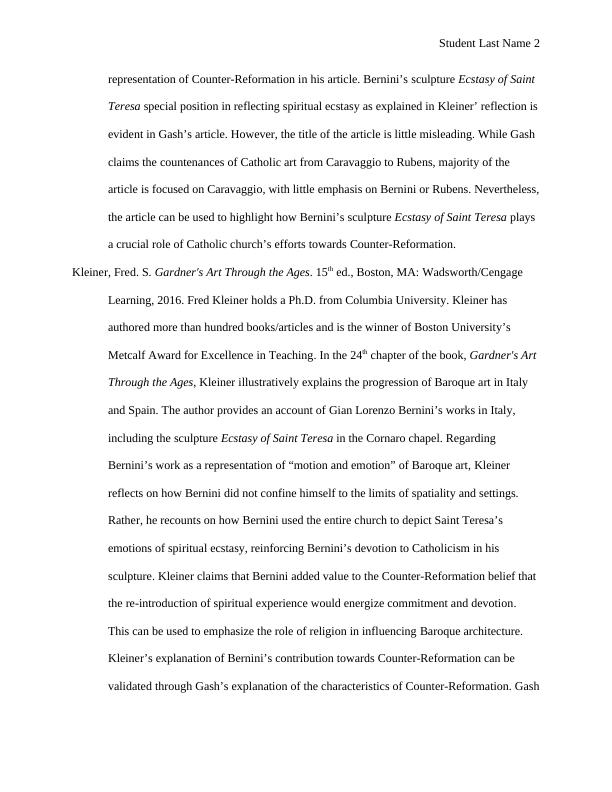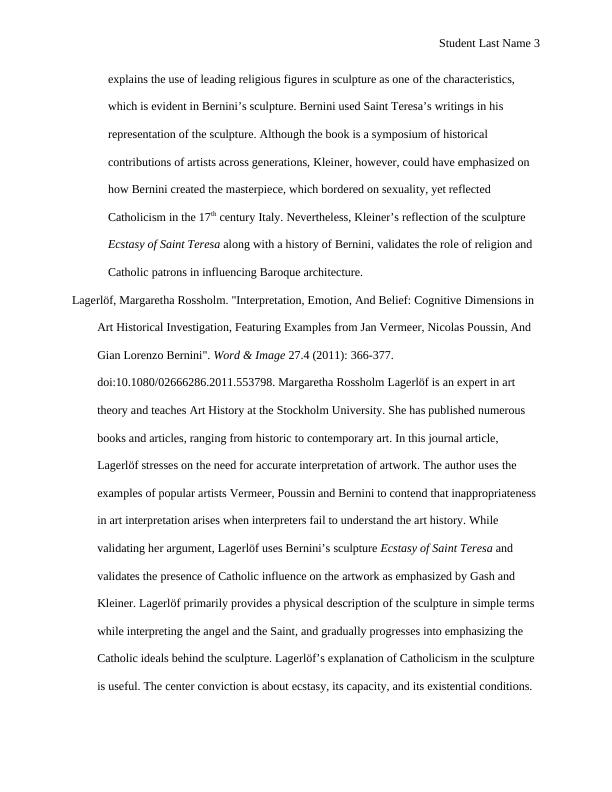The Role of Religion in Influencing Baroque Architecture – The Case of Gian Lorenzo Bernini’s Ecstasy of Saint Teresa – An Annotated Bibliography
Write a research paper on a selected work of art, contextualizing it within art historical developments and broader social, religious, or political history. Include an annotated bibliography with 5 academic sources and use MLA style for referencing.
7 Pages1992 Words368 Views
Added on 2023-04-25
About This Document
This annotated bibliography explores the role of religion in influencing Baroque architecture through Gian Lorenzo Bernini’s Ecstasy of Saint Teresa. It includes articles by John Gash, Fred Kleiner, Margaretha Rossholm Lagerlöf, Dany Nobus, and Genevieve Warwick.
The Role of Religion in Influencing Baroque Architecture – The Case of Gian Lorenzo Bernini’s Ecstasy of Saint Teresa – An Annotated Bibliography
Write a research paper on a selected work of art, contextualizing it within art historical developments and broader social, religious, or political history. Include an annotated bibliography with 5 academic sources and use MLA style for referencing.
Added on 2023-04-25
ShareRelated Documents
End of preview
Want to access all the pages? Upload your documents or become a member.
Article on Baroque Period Art
|5
|977
|332



